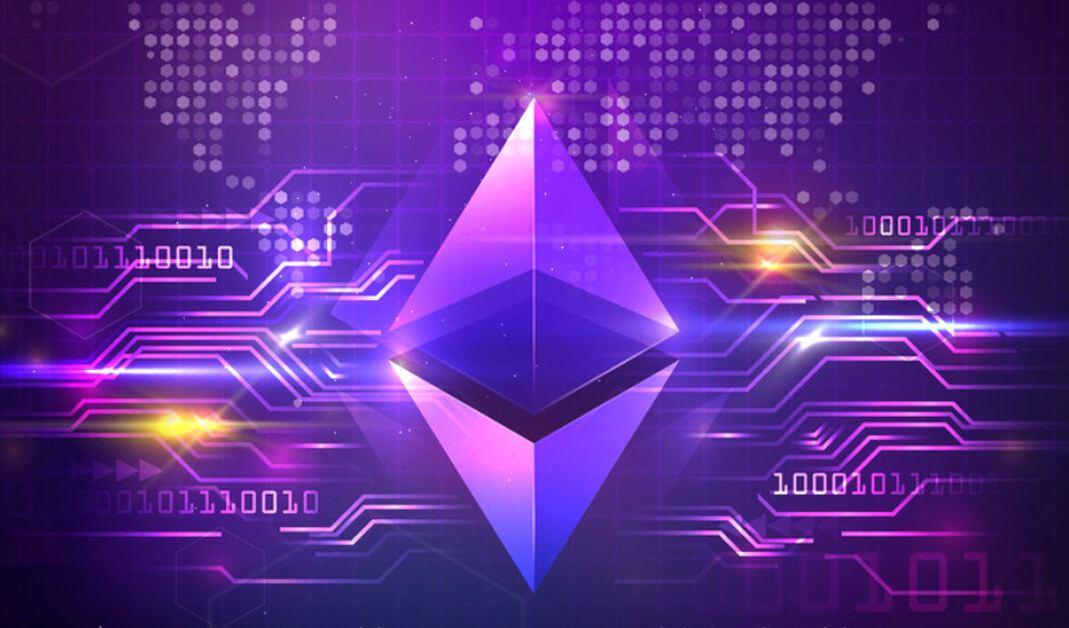The internet is a continuously evolving space, and applications are some of the amazing products of this evolution. They are especially dandy in saving everyone the time to search for their favorite websites on the search engines. Currently, there are over 5 million applications in total on Google Play, Apple App Store, Amazon Store, and Windows Store.
However, decentralized applications are quickly gaining traction over centralized apps. Despite the mindblowing variety existing, Ethereum blockchain is the main basis for dapp functionality. In that case, many DeFi protocols have gone ahead to integrate dapps as a bonus to their ecosystems.
Their decentralized nature enables the free-flow of information without a central entity governing it. A plethora of them use open-source software that can help other developers come up with theirs. Safe to say, dapps are here to change today’s internet for better efficiency, diversity, privacy, security, to mention but a few.
That said, let’s get into 10 Ethereum dapps you should know about.
Aave
Aave is an open-source protocol bringing the concept of lending into the crypto world. The decentralized platform enables investors to secure adequate incomes by depositing on lending pools. Therefore, users realize interests depending on the lending demand of the crypto market.
On top of that, borrowers have access to both undercollateralized and overcollateralized loans emanating from the same pools.
At the core of Aave’s lending services lies 16 digital assets, whereby 5 are stablecoins. There are also flashloans going for a 0.09% fee while regular borrowed loans carry a 0.01% fee. In most cases, smart contracts experience unexpected glitches that lead to financial losses.
To mitigate this risk, the ethereum-based platform conducts regular audits that ensure the smart contract performs effectively.
Balancer
Balancer gives portfolio owners the chance to design balancer pools, which adds liquidity to the entire Balancer network. Since everyone can include a maximum of 8 digital tokens, the protocol allows pool creators to modify the token weights into specific categories.
Ideally, the pools act as automated market-makers because users can trade against any tokens available in the pool.
Balancer pools are guided by smart contracts divisible into two sections. One section contains controlled pools governed by a wallet address responsible for adding or removing liquidity to the pool. The other category is a public pool offering anyone the freedom to swap digital tokens and add/remove liquidity in the pool.
Furthermore, the ecosystem allocates nearly 7.5 million BALs every year to liquidity providers. Security concerns are handled by Open Zeppelin and Trail of Bits, who carry out auditing procedures on the protocol’s smart contracts.
Yearn Finance
Running on the ethereum blockchain, Yearn Finance incorporates various DeFi functionalities on one platform. At Yearn, investors can look forward to maximizing their earnings with the Vault product. Vault robots automate the yield generation process after depositing your digital assets.
To safeguard investors against financial losses, Yearn provides an insurance feature that covers unforeseen losses on smart contracts and ethereum-based projects. Zap is yet another distinct feature on Yearn, allowing you to swap from a variety of stablecoins.
YFI token holders exercise governance and control over the whole platform through a multi-signature wallet of nine members. To obtain the YFI token for pool staking or governance purposes, interested users can acquire them on decentralized exchanges and take part in voting for significant proposals.
Ren
Ren protocol adopts an interoperability approach for cross-chain lending, decentralized applications, exchanges, and many more. At RenVM, users can access and transfer any token of their choice across different blockchains.
Moreover, the decentralized machine protocol maintains the utmost secrecy levels via Shamir’s secrets, a method used to avoid non-disclosure of data. The network leverages digital machines called darknodes, which are duplicated and spread across the globe. Darknodes communicate with each other and team up to provide cutting-edge computational power.
However, machines or virtual programs fail from time to time, which is why Ren assures its users that the network will continue functioning even in the absence of darknodes.
Ren was launched to bridge other blockchains and instill a permissionless ecosystem. Hence, other DeFi platforms can use this technology on their projects and existing smart contracts.
MakerDAO
Sometimes, crypto lending can be a hectic option, especially with the volatile nature of cryptocurrencies. MakerDAO, however, counters the crypto loan issue by introducing its stablecoin dubbed DAI. To start on the lending functionality, users need to lock up a certain amount of ETH in Maker’s smart contract to generate DAI coins. Remember, locking up massive ETH amounts gives you more DAI.
By merging the loan with a stable currency, users can have a more accurate figure of what they can pay back. At times, the ETH collateral price could flop way below the DAI value borrowed. When such a scenario happens, the ETH collateral is used to settle the borrowed DAI.
MakerDAO is a fully autonomous organization governed by MKR token holders. If the value of DAI sways away from the one-dollar peg, more MKR will be produced. Consequently, if DAI stabilizes, MKR tokens will be burnt to deplete its supply.
The ethereum-based organization is a genius invention from Rune Christensen, who is also the current CEO.
Compound
Compound is one of the most convenient platforms to access liquidity. The liquidity comes in when a user distributes his/her assets to the protocol. Additionally, the platform is also a peer-to-peer lending platform advancing digital asset loans to users.
However, to be eligible for the loans, users have to supply their assets to the protocol first, to be used as collateral. A new batch of cTokens is created once investors distribute their assets to Compound. For instance, if investors contribute USDC to Compound, they will receive cUSDC in return.
In terms of security, the ethereum-based protocol undergoes auditorial supervision by Gauntlet and OpenZeppelin companies. Users can get a hold of cTokens by minting them through a Metamask wallet, ethereum wallet, Huobi wallet, to mention a few.
IDEX
IDEX poses as a user-friendly decentralized exchange leveraging smart contracts and the ethereum network. The exchange came into the limelight in 2018 and is one of the largest Dapp on Ethereum’s ecosystem. It allows users to trade ETH and ERC-20 tokens on peer-to-peer grounds. Traders who make orders which are already in the books incur a 0.2% fee, while those who come up with new orders are subject to a 0.1% fee.
Security is always one primary cause of worry for traders since the exchange enables them to store funds. Nonetheless, IDEX guarantees the best protection for your assets by storing your funds on the ethereum blockchain. That way, malicious individuals don’t stand a chance of hacking or illegally accessing your belongings.
On top of that, the exchange integrates Ledger Nano S, a cold storage instrument meant to safeguard a trader’s digital assets.
CryptoKitties
Blockchain collectibles continue to get massive attention from investors worldwide, with CryptoKitties being one of them. CryptoKitties are collectible cats residing on the blockchain network. Each digital cat is unique, possessing different characteristics, and users can buy and trade them like typical digital assets.
Unlike the regular currencies, which are fungible, CryptoKitties are non-fungible tokens. Therefore, every feature that the digital cat has is encoded on the ERC-721 token. Moreover, its decentralized architecture makes it a valuable digital token because no single entity can add more CryptKitties to the network. Owning the ERC-721 token requires users to have an equal amount of ether to pay for a kitty.
Curve
Curve is an ethereum-based platform combining the exchange of cryptocurrencies and earning from liquidity pools. The decentralized exchange contains multiple pools, each with different cryptocurrencies.
Here, traders can earn up to 300% profit on all deposits with the exchange, and the earnings are payable in the form of cryptocurrencies. Curve minimizes the chances of financial losses by giving you a diverse set of assets to execute trades.
Additionally, losses are also mitigated by enabling stablecoins to be swapped with cryptocurrencies. Curve maintains the most incredible security level by utilizing high-end encryption strategies on a trader’s funds and transaction operations.
dYdX
dYdX is a one of a kind margin trading ecosystem founded on the ethereum network. The decentralized platform is unique because it allows traders to make crypto predictions based on their price movements, thus explaining the concept of marginal trading.
Traders will only profit if the bets are correct and ultimately lose if the predictions are wrong. dYdX extends its lending services to customers, provided they have substantial collateral to qualify for the loan. Lenders also profit off any deposits on the ecosystem and with every new block mined.
At dYdX, lenders and borrowers engage in a global lending pool. To kick start the dYdX journey, you will only need a MetaMask or ethereum wallet similar to other decentralized applications.
Bottomline
Rest assured, ethereum is taking over the world of decentralized financing. Its futuristic advancements, such as smart contracts, enable a modernized way of executing trades on an ecosystem.
Dapps harness the same technology bringing some of the traditional financial system concepts into the new era of cryptocurrencies. As we transition to the digital world, decentralized applications will be a haven for most investors to realize or make passive incomes.




